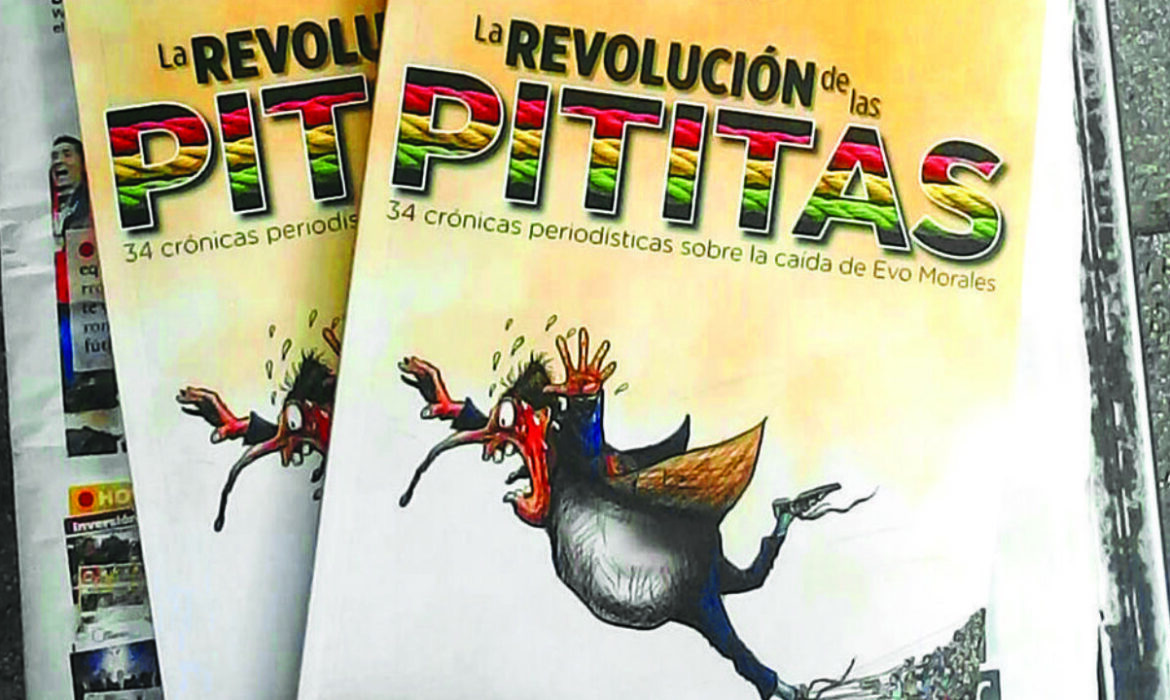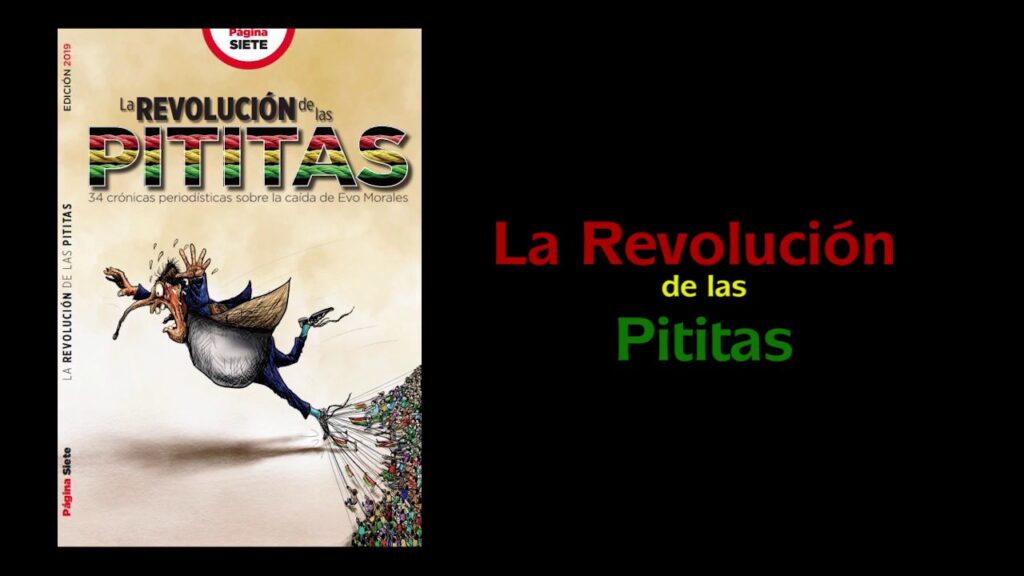

THE REVOLUTION OF THE PITITAS BOOK
21 June 2021
PAGINA SIETE NEWSPAPER EDITORIAL
Former President Jeanine Añez has based part of her statement before the Prosecutor’s Office on the book La revolucion de las Pititas [The Revolution of the Pititas], which was prepared by the journalists of Pagina Siete after the crisis of October and November 2019. It must be remembered that Evo Morales’s resignation was produced on November 10 and that this publication was published on December 19 of that year, therefore, its content is only a reflection of what journalists saw or heard during that crisis, without time to create rhetoric that has nothing to do with reality.
The book contains 34 journalistic chronicles, whose authors are or were Página Siete journalists at that time, except for our two former directors, Raúl Peñaranda and Juan Carlos Salazar, who were no longer part of the staff, but who very graciously agreed to collaborate with a chronicle each. one.
The story begins with the structural causes of the conflict that have to do with the decision of Evo Morales and the MAS [Movement Toward Socialism] to ignore the result of the referendum of February 21, 2016, and to prolong themselves in power. It continues with the chronicles of the elections, the allegations of fraud, the violence unleashed after the TREP cut-off, the 21-day protest, the deaths of Montero, and the OAS report on the malicious acts committed in the elections.
Now entering the most critical days, the chronicles of the book reflect the mutiny of the Police, the role of the armed forces, the resignation of Evo Morales and the entire chain of command, the acts of violence that affected groups on both sides. There are reflected the atrocities committed in Vila Vila against the civics that traveled to La Paz to reinforce the protest, the burned houses of the MAS representatives, and then the overflowing violence in La Paz, which led to the burning of the houses of Waldo Albarracín, Casimira Lema and Puma Katari buses.
Of course, there are also chronicles about the attempts of the Church and the European Union to pacify the country, the assumption of Jeanine Añez, and, later, the violence unleashed by the security forces in Sacaba and Senkata. It is a plural book, which includes the list of the dead on both sides and which even reflects the IACHR report, which talks about “the massacres” committed by the Añez Government.
The title of the book was inspired by Evo Morales himself because in full citizen protest he made fun of the pititas [common household threads] that the protesters used to block the streets, so the popular revolt was renamed the revolution of the pititas. It is not a panegyric book, as some MAS supporters wanted to believe, on the contrary, it has a plural look at the facts, so much so that now the MAS supporters themselves highlight it and value it because that is how it suits them for their purposes.
Página Siete journalists are proud to have produced this and other books throughout their short history, but at the same time, it is striking that former President Añez has decided to read that document as part of her statement because it is assumed that a witness only testifies to those facts that he or she has witnessed (worth the triple redundancy).
Añez is based on the book until the events of November 10 because she was in Trinidad and she only became the protagonist of the events as of November 11, when she arrived in La Paz to become temporary president.
Based on Raúl Peñaranda’s chronicle, the former president says that Mesa, via telephone and through radio, rejected the idea that Adriana Salvatierra or any other low-level senator could assume the presidency, in the first case because the protests would not cease and in the second because it would be unconstitutional.
In any case, it is not only surprising that Añez has relied on the book to testify, but that the Prosecutor’s Office itself has admitted it and that it has transcribed some episodes of the book as such. The revolution of the Pititas is a journalistic book and does not claim, in any case, to be a legal document.




